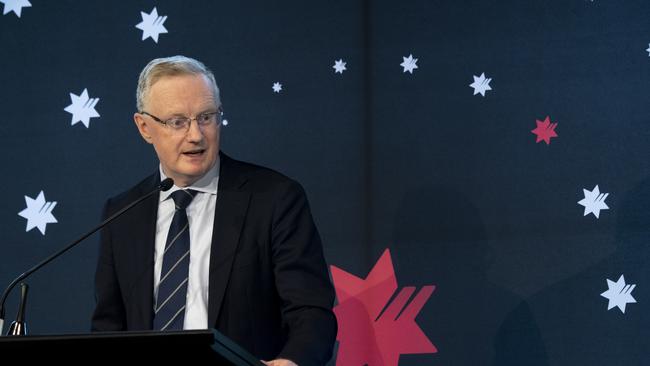Australia behind the global rates curve with inflation alive and kicking

The ASX was nipped 0.3 per cent on Tuesday after the December quarter inflation print surprised on the upside, delivering an annual inflation of 7.8 per cent compared to an expected 7.5 per cent.
Call it the market getting ahead of itself but enthusiasm now curbed, the expectations of a February rate rise has gone up from 52 per cent to 92 per cent.
The latest numbers were well within the Reserve Bank’s last public forecast that rates would peak in the December quarter at the nice round figure of 8 per cent. And it ultimately does little to change the course of further rate hikes that the Bank has set to rein in inflation.
Underpinning the quarterly inflation jump of 1.9 per cent is a story of strong spending in travel and accommodation. That much should be no surprise given the long lockdown where Australians grew both savings and itchy feet.
The latest earnings results of retailers likes Myer and Super Retail demonstrate continued willingness of consumers to eat into their savings.
So why was the market so confident that inflation would be checked further? Part of the reason is the shift in the date from overseas. Aside from the recent higher than expected inflation figure in New Zealand, global inflation shows all the signs of waning.
In America for six straight months now, annual inflation has slowed from 9 per cent down to 6.5 per cent.
And in the UK inflation rose 10.5 per cent in the year to December 2022, down from 10.7 per cent in November and 11.1 per cent in October.
This all speaks to a growing confidence that recession in Europe and the US may be avoidable. In Europe the unusually mild winter has taken pressure off energy supplies which has both helped support the economy and fed less into inflation. The US is also enjoying lower energy prices.
Interestingly core inflation, where more volatile prices like fuel are stripped out is also slowing in the US. The same cannot be said for Australia where trimmed mean annual inflation, increased to 6.9 per cent, the highest since the Australian Bureau of Statistics first published the inflation series in 20 years.
While Governor Lowe’s last monthly statement in December notes that global factors explains much of Australia’s high inflation, it also notes that “strong domestic demand relative to the ability of the economy to meet that demand is also playing a role”.
Ahead of the next board meeting RBA members will be focused on reading the tea leaves at home. There is broad expectation that the bullish consumer spending since the Black Friday Weekend will subside within the next few months, partly due to the run down in savings and partly due to rising mortgage rates biting home budgets.
For the RBA, the central mission remains to return inflation to the 2 to 3 per cent band while causing as little damage to the fragile economy as possible.
The better news for the Bank is that China’s zero tolerance on Covid has ended. The economy is opening again and Australia-China relations are slowly improving. Australia’s mining exports remain critically dependent on the state of Chinese manufacturing and these developments should help counter any hit to the economy of the RBA’s fresh rate hikes.
The latest inflation news is not welcome in Canberra however. It puts greater certainty on more rate rises to curb overall inflation while prices on necessities are rising at much higher rates.
This week’s UBS report into supermarket prices shows average food price increases at Woolworths and Coles running at 9.2 per cent over the December quarter, up from 8.2 per cent in the September quarter.
In the meantime Australian wages growth while rising is clearly not keeping pace with inflation. The December quarter WPI is still to come but the September quarter showed wages rising 3.1 per cent over the year.
The only solution for real wage increases, as the government well knows is for the RBA to tighten enough to return inflation to its target band, but that is a painful process ahead of the May Budget.
The Treasurer’s shaping of capitalism after the crisis will be released on 9 May.
Meanwhile overseas there is growing consensus that the country has reached an inflection point on inflation and debate has turned to how fast inflation will fall. Some argue that the dramatic reduction in previously soaring energy prices will push the fall faster. The Federal Reserve in the US remains cautious, with officials talking of slowing but not stopping rate increases for the upcoming meeting at the end of this month.



Wednesday’s inflation print sends a message. In the central bank tightening cycle, for now at least, Australia is firmly behind both the US and UK/Europe where inflation is coming off and the debate has moved on to what the pace of falling inflation might be.